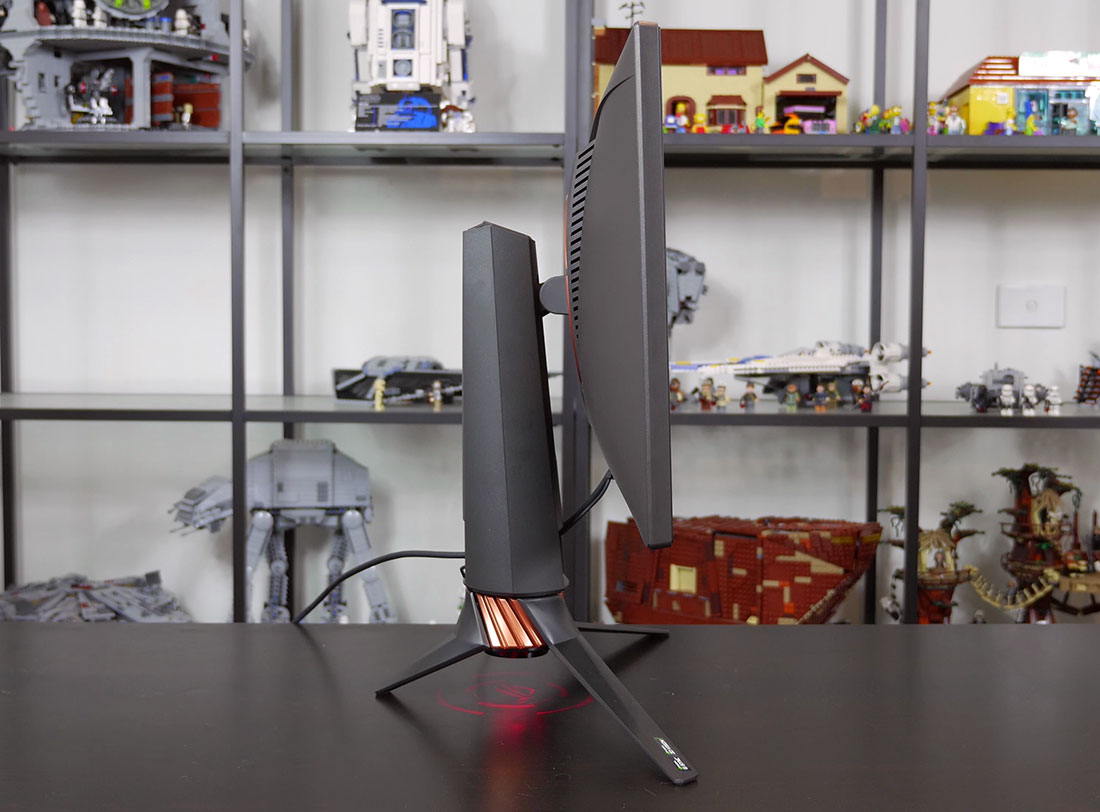What to Expect: Responsive, Low Latency Gaming
There's a fair bit to like about the Asus ROG Swift PG258Q, especially for those who enjoy fast-paced gaming at high refresh rates. The star of the show here is clearly the 240 Hz refresh rate, which when combined with G-Sync technology, led to the most responsive gaming experience I've had.
When upgrading from 144 Hz to 240 Hz, there is only a minor difference to input lag and responsiveness, and those who are mostly casual gamers might not benefit significantly from this improvement. However, for competitive gamers that rely on fast reaction times and zero input latency, the additional speed provided by 240 Hz may give a competitive advantage. And for those still stuck on 60 Hz, jumping to 240 Hz will blow your mind.
The design of the monitor is decent though certainly 'gamer' in nature, with a good array of cable management and excellent positional support; it's great to see swivel and height options here. The projected LED logo is a bit of a gimmick but at least it can be disabled, and I love the slim bezels on the front of the display. Unfortunately, the monitor isn't particularly slim, and the stand can occupy a fair bit of desk space with its wide prongs.
There is a decent range of on-screen features included with the PG258Q, including an FPS counter, crosshairs, and color-related settings like the Blue Light Filter and dynamic contrast. Thanks to a directional toggle on the rear of the display, the OSD is easy to navigate, and I wish all monitor manufacturers would integrate a similar control scheme.
Color performance surprised me somewhat considering the TN panel used here. Contrast and viewing angles aren't fantastic by any means, which is not a surprise for this LCD technology, however default color quality is decent. Gamers should expect somewhat-near-sRGB accuracy out of the box and a very bright display, which leads to a good viewing experience with solid, vibrant colors.
Calibration can take the PG258Q to new heights, and I achieved great sRGB accuracy with little effort and a few tweaks in the OSD. Due to low contrast and unimpressive viewing angles I'd still stick to a professional monitor for any serious color work, though the PG258Q still performs well when calibrated.
Shopping shortcuts:
The main issue with the PG258Q is its price. A 240 Hz monitor, even though it's TN and 1080p, will set you back $600 from Asus. The Acer Predator XB252Q is available as a G-Sync competitor for $50 less - FreeSync alternatives are much cheaper - and it seems all 24.5-inch 240 Hz monitors right now are using the same panel. I can't comment on the XB252Q's quality because I haven't tested it, but I can say you will be getting a great display from Asus with the PG258Q if you head down the 240 Hz path.
score
Pros: 240Hz refresh with G-Sync leads to extremely responsive, low latency gaming. Decent design with easy-to-use OSD. Surprisingly good color performance.
Cons: Expensive for just a 24.5-inch 1080p display. Limited improvements over 144Hz displays.



